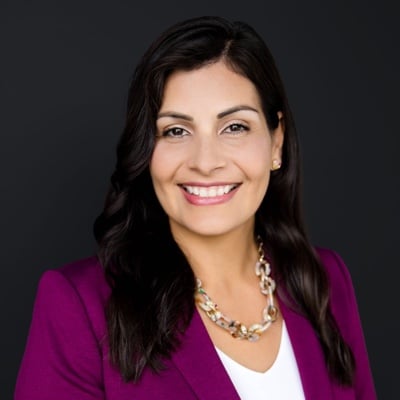Sometimes the best way to lead a successful strategy is to have survived an unsuccessful one. That is precisely the spirit with which Anne Hagen is approaching her credit union’s second go at Hispanic membership growth. The vice president of marketing for Iowa’s Community 1st Credit Union, Hagen believes one of the biggest lessons learned from the cooperative’s first attempt was that a single champion of the program is not enough.
“We identified how important it would be to serve the Hispanic community back in 2007,” said Hagen. “When we lost the key person leading that effort, however, the program fizzled out. After continuing to evaluate the segment and truly understanding how underserved it is, we knew we had to try again.”
President and CEO Greg Hanshaw explained that the calling to do more is rooted in the credit union’s 80-year history. “Our goal as an organization has always been to personify the credit union philosophy of people helping people. Although that can sound cliché, it’s the real deal around here. And it’s a huge part of why we felt years ago it was critically important to reach the Hispanic market.”
The credit union recognized a Hispanic member growth plan would need to be a cooperative-wide initiative supported by everyone from frontline staff to the C-suite. Yet, they also understood the importance of hiring an empathetic community member. This individual would help credit union staff better identify and overcome obstacles to engaging the Hispanic community. David Suarez joined the credit union as Bilingual Community Development Manager in June 2015. Suarez then helped recruit Edith Cabrera, the credit union’s first Hispanic board member.
“When David came to the credit union, he did not sit back,” said Hagen. “He immediately identified those areas where we weren’t doing enough for the community and started building initiatives from scratch. He spearheaded partnership with Coopera to help us learn best practices and with local Hispanic organizations to get us connected to the community in a grassroots way.”
According to Hagen, Suarez has a knack for explaining to community members how a credit union can help. “His message really resonates with the Hispanic people in the communities we serve.” The result has been close relationships with many credit union members, many of whom attribute their financial successes to his guidance.
That knack for explaining extends to Suarez’s influence inside the credit union. “One thing I’ve learned from David is a lot of the folks in Iowa have come from cultures and backgrounds where they didn’t trust the financial system that was built to provide those types of services,” said Hanshaw. “So we have an opportunity to show what a not-for-profit cooperative is and how it is uniquely built to provide services to people who may not meet the right criteria at a traditional financial institution.”
Suarez insists the key to building connections with Hispanic members is trust. “We have to gain that trust in the community,” he said. “We conduct outreach with community leaders, schools – even soccer teams – so we can show them we are offering not only services, but education. Typically, they are very interested to learn, but it’s important to know they may not have the basic knowledge of financial concepts. You have to get close to them to understand their particular point of view and their particular issue. Only then can you begin to develop the clear, simple messages you need to start them down the path to financial success in the U.S.”
Among the connections Suarez and the Community 1st leadership has built is a partnership with the Mexican Consulate of Omaha, Guadalupe Sanchez Salazar. Shortly after building a relationship with Sanchez Salazar, the credit union signed an agreement to collaborate for the benefit of Mexican nationals that live in Iowa. As part of that agreement, any Community 1st member with a matricula consular card and Individual Taxpayer Identification Number (ITIN) has access to nearly all of the credit union’s products and services, including mortgages. This will be hugely important to the credit union as it looks to serve more Mexican immigrants, which today make up 75 percent of Iowa’s immigrant population. Suarez pointed out the credit union is also working with the IRS to help more of its community members obtain ITINs. “We’re excited to help the community understand that with this number comes great advantages, such as checking accounts, loans and potentially even a mortgage.”
In addition, the credit union is working with Iowa State University’s Extension and Outreach agency, which connects Iowans with the university’s research and resources. The agency is helping the credit union understand the education levels of the Hispanic community members local to the 15 communities PFCU serves through 17 locations in Iowa and northern Missouri.
In 2016, the credit union was given the Juntos Avanzamos designation, which translates to “Together, we advance. Awarded by the National Federation of Community Development Credit Unions and Coopera, the designation is a national recognition of the work and commitment made to offer financial services to the Hispanic community. The designation also makes a public proclamation to the Hispanic community that the Juntos Avanzamos credit union welcomes the Hispanic community.
On the strategic roadmap for Community 1st is continuous employee training and cross-department education so every staff member is aware they can accept alternative forms of identification to serve more community members. In addition, the credit union will conduct more community outreach, pursue a community development financial institution (CDFI) designation and institute a series of financial education programs in the coming year.
“When I travel the country and talk with other financial marketers, many are surprised to hear that Hispanic initiatives are so important to an organization in Iowa,” said Hagen. “They don’t necessarily think of the Midwest as a hotbed of multicultural strategy. It makes me proud to be able to share what we’ve learned, as well as what we’ve achieved, in just a few short years."







